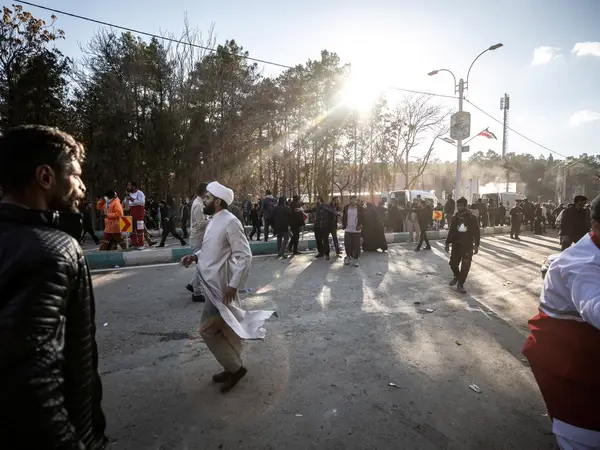Seeking a scapegoat for a deadly bombing on Wednesday, Iran has turned to its old foes Israel and the US, but the Iranian public is not so easily fooled.
While both Israel and the US have carried out targeted assassinations and attacks on Iran's military and nuclear facilities, the two have never committed such an attack in built-up populations and with potential civilians, unlike Islamist groups such as the Islamic State group and Al Qaeda, which have.
But Iranians, who have been victims of violent suppression since the 2022 uprising and long before, have begun to look closer to home. In the wake of the Women, Life, Freedom protests, over 550 Iranians were brutally murdered, with no implications from the regime to rein in its security forces.
Thousands of Iranians on social media have claimed the attack was organized by the Islamic Republic itself in an attempt to further its domestic and foreign policies.
They cite the absence of Soleimani’s family members and high-ranking political and military officials in Kerman at Qasem Soleimani's tomb during the incident marking the fourth anniversary of the proxy leader's death, suggesting an indication of the regime’s complicity.
On Wednesday, prominent Iranian dissident Masih Alinejad wrote on X: “Why were Qasem Soleimani’s children absent from their father’s funeral? … As the regime blames Israel and America, Iranians hold the Islamic regime leaders accountable for this deadly attack, recalling the regime’s history of crimes against their people.”
In the usual regime rhetoric, Mohammad Movahedi-Azad, Iran’s Attorney General, held responsible “the global arrogance led by the US and Israel” for the attacks which have so far claimed the lives of 84 people.
Esmail Qaani, the head of IRGC Qods Force, vowed revenge against the “bloodthirsty criminals” who launched the attack, adding that they were “fed by the US and Zionists.”
Reiterating a similar stance, Gholamreza Soleimani, the commander of Basij militias, said CIA and Mossad are “behind the scene” of the blasts.
But history tells a different story. There have been numerous reports about the Islamic Republic’s involvement in “terrorist attacks” carried out previously in Iran. Five years ago, Mostafa Tajzadeh, a former government official, admitted that the Iranian regime had a role to play in the explosions in Imam Reza’s shrine in Mashhad in 1994.
Iranians have accused the regime of planning the attacks on Shahcheragh shrine, another religious site, in Shiraz last year, following the national uprising in 2022, claiming it was a desperate attempt on the part of the Islamic Republic to frighten the protesters and mobilize its supporters via appropriating religious sentiments.
US State Department spokesman Matthew Miller strongly rejected the allegation regarding Washington’s involvement in the attack: “The United States was not involved in any way, and any suggestion to the contrary is ridiculous.”
“We have no reason to believe that Israel was involved in this explosion,” he went on to say.
The attack had the hallmarks of one of the region's Islamist groups such as Islamic State or Al Qaeda though none has yet claimed responsibility.
It is familiar rhetoric for Iranians who are well versed in the propaganda churned out by Tehran, using the US and Israel as easy fall guys for actions perpetrated if not by their own security apparatus, then by other militias.
